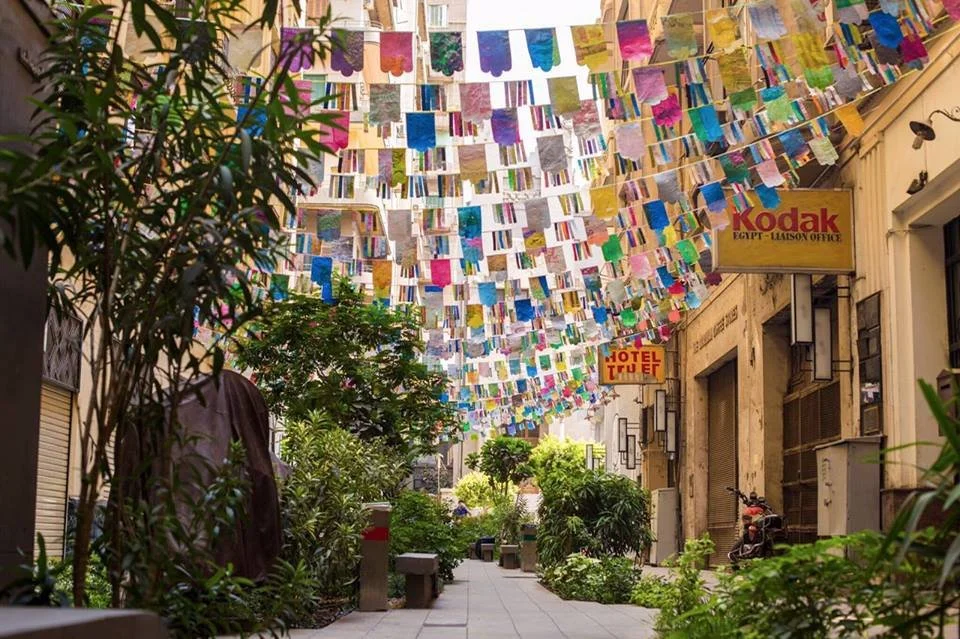Private initiatives versus state interventions
An on-going debate questioning the sustainability of newly pedestrianised streets; The cases of Kodak and Al-Alfi Passageways
Photo by Shaimaa Ashour, 2018
Location American University in Dubai
Year 2018
Status Published Chapter
Author Bedour Braker, Ph.D. & Shaimaa Ashour, Ph.D.
Type Conference
Organiser The American University in Dubai
Presented 13-15 Nov. 2018
Published 15. Feb. 2020
ABSTRACT:
A walk through Downtown Cairo is a unique experience any urban planner and architect would appreciate. It is a district from the 19th century that was dramatically transformed from an elite neighbourhood into a chaotic district overrun by street vendors and busy traffic within its streets. A decayed condition which left the area with many forgotten urban pockets that caught the attention of the Egyptian government and some private developers in the 1990s. Their agenda focused on bringing in new blood of different activities at the expense of expelling many residents and small-scale stakeholders. Along this sprawling gentrification, many private initiatives worked tirelessly on reclaiming some forgotten pockets and marginal passages as potential seeds for new urban ideas and social bonds to re-establish as opposed to gentrifying the area. This paper focuses on two pilot projects in Downtown, one is the ongoing experimentation of ‘Kodak’, a narrow service alleyway that was transformed into a 'public hub' by private entrepreneurs named ‘CLUSTER’. They emphasized a societal method that would bring in new types of users and promote for a more engaged interaction with the residents of the area. The other project is called ‘Al-Alfi’ Street, a project directed by the governorate in coordination with “Alfi Street Occupant's Union”. The street went through many top-down strategical planning since the 1990s, mainly focusing on refurbishing the pavement, face-lifting the shop windows, and controlling vendors’ trespassing. This paper discusses the successes/failures of the collaboration between urban planners and users in the streets of Downtown through exploring whereas the two different strategies of both cases which are still under evaluation. The paper questions how can we ‘as planners’ make sure that such transformations would not gentrify the streets as we know them? What sort of policies would ensure our social responsibilities toward our societies?

